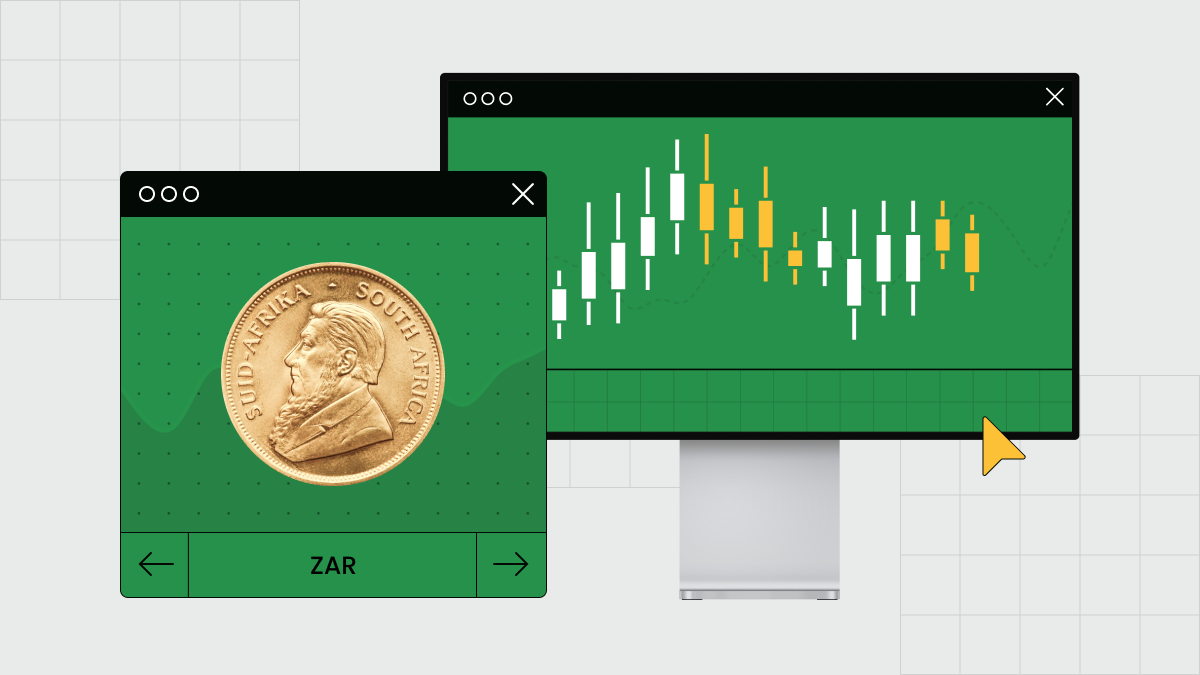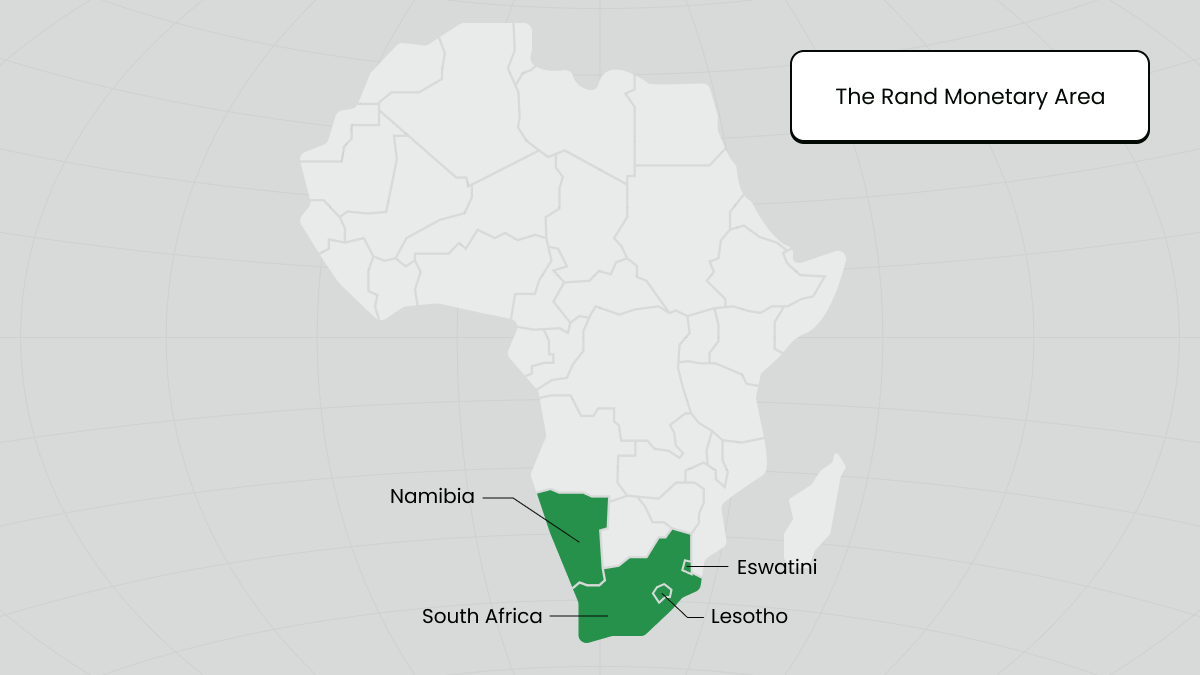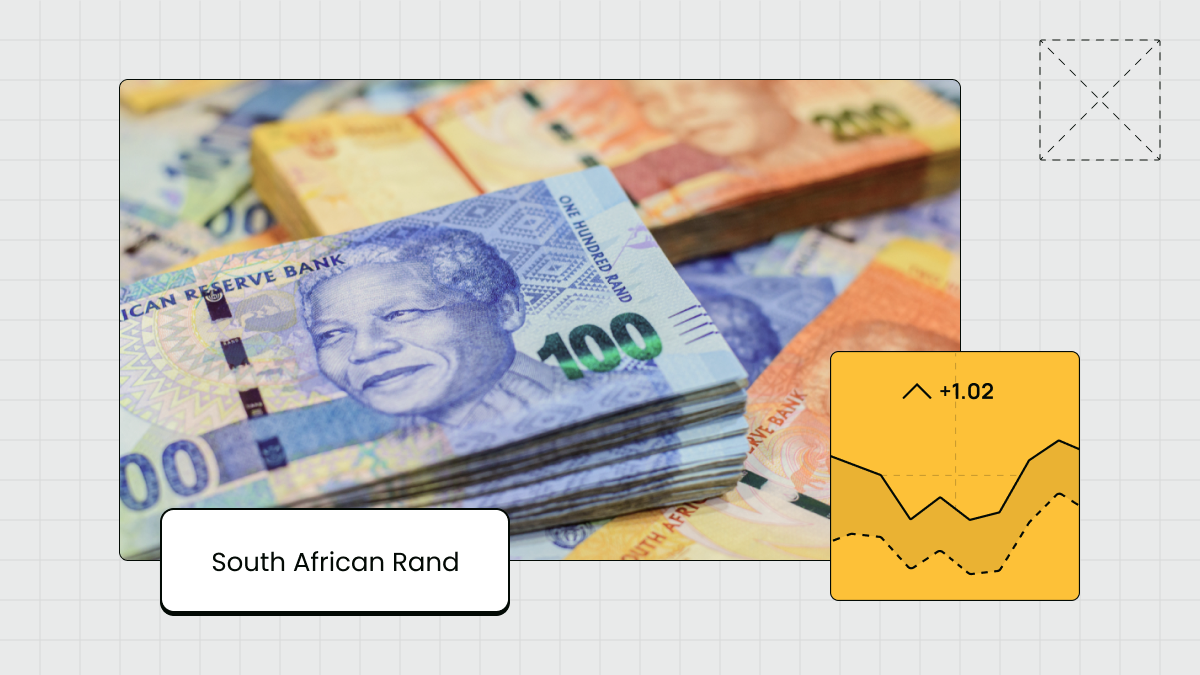
May 23, 2025
Basics
Understanding the South African Rand (ZAR): History of the Currency

Currencies often carry the weight of a nation’s identity. The South African rand is one of these currencies. It does not just reflect monetary value, but holds echoes of political shifts, resource booms, and decades of change. For traders, the rand is more than a number on a screen. It is a signal, a story, and sometimes, a warning.
Why does the ZAR matter so much in global markets? Perhaps because South Africa, despite its ups and downs, remains one of the most influential economies on the African continent. The rand moves with the tides of policy and interest rates, but also with sentiment. And that makes it particularly interesting and sometimes difficult to interpret.
Understanding its path through history may not make you a fortune overnight, but it certainly helps make sense of a currency that is rarely boring.
What is the South African rand (ZAR)?
Ask most people about the rand, and they might know it is South Africa’s currency. Fewer know that the abbreviation ZAR actually comes from the Dutch. This ties back to the country’s colonial history, where Dutch influence left more than just place names.
The rand itself came into circulation in 1961. It replaced the South African pound just as the country was reconfiguring its place in the world. That date was not chosen at random. It marked the year South Africa officially became a republic, cutting remaining formal ties with the British monarchy.
As for the name, rand comes from the Witwatersrand, the ridge where Johannesburg sits and where the country’s richest gold seams were first mined. It is a fitting link. Gold, after all, helped shape South Africa’s economy and positioned the country as a global mining powerhouse. Tying the currency to that history made symbolic sense.
Today, the rand is used not only within South Africa but also in a few neighboring countries that share monetary ties. These include Namibia, Lesotho, and Eswatini. Though each has its own national currency, those currencies are pegged to the rand, which functions almost like a regional anchor.
The South African Reserve Bank, or SARB, is the institution behind the currency. It is responsible for printing it, managing interest rates, and generally keeping the financial system in balance. But make no mistake. The rand’s performance is not only about what happens inside the central bank. It is sensitive to politics, commodity prices, global risk appetite, and even public sentiment.
It has been through good years and bad ones. Times when it was stronger than the dollar, and others when it seemed to fall by the day. Through it all, the ZAR has remained a symbol of a country whose economy is deeply tied to both its resources and its role on the global stage.
Understanding the South African rand (ZAR)
The end of apartheid and economic impact
It is hard to talk about the rand without talking about apartheid. South Africa’s history of racial segregation shaped more than just society. It defined the economy, too. And when apartheid finally came to an end in the early 1990s, the financial consequences were immediate and far-reaching.
Markets dislike uncertainty. And back then, there was plenty of it. Although the world celebrated the move toward democracy, investors were not sure what to expect. The 1994 general election, the first democratic one in the country’s history, brought Nelson Mandela to power. Hope was high, but so were the questions. What would the new government do? Could the economy stay stable? Would foreign investors stay or leave?
The rand, like most currencies, responded with volatility. Its value moved sharply in both directions, depending on the news cycle and the broader mood. At times, optimism gave it a lift. At others, nervousness pulled it back down. Still, despite the shakiness, the end of apartheid opened the door for reintegration into global markets. Sanctions were lifted. Trade resumed. Over time, South Africa’s financial systems began to rebuild on new terms.
But that early post-apartheid period was delicate. A single speech could move markets. A new policy draft could trigger capital flight. The rand reflected all of that. It was not just a currency. It was a live reaction to a country in transition.
Krugerrands and gold
South Africa and gold have always gone hand in hand. So it is no surprise that one of the country’s best-known exports is not a mining stock or a corporate brand, but a coin.
The Krugerrand was introduced in 1967. It was designed with a very clear goal in mind: to make private gold ownership easier. At the time, many countries had tight controls on gold, and few offered convenient ways for individuals to invest in it. The Krugerrand filled that gap.
Named after Paul Kruger, the former president of the South African Republic, and linked directly to the rand, the coin became an international hit. Each one contained exactly one ounce of fine gold. It had no face value printed on it because its market value was based on the price of gold itself. Simple, but effective.
Even during the apartheid years, when sanctions isolated the country, Krugerrands found buyers across the world. People wanted gold, and this coin was one of the most efficient ways to get it. For South Africa, it was a way to keep part of its economy connected to the world even when other routes were blocked.
Today, the Krugerrand remains popular. Investors buy it for its gold content. Collectors seek out rare editions. And for many South Africans, it holds nostalgic value. A shiny symbol of the country’s resource-driven past.
The South African Reserve Bank
Every currency needs a guardian, and in South Africa’s case, that role belongs to the South African Reserve Bank. Known simply as the SARB, this central institution has been in place since 1921. That makes it one of the oldest central banks outside the more developed economies, and it has had plenty of time to define its role.
At its core, the SARB’s job is about balance. It tries to keep prices stable, inflation under control, and the economy on a sustainable track. Of course, that is easier said than done, especially in a country where growth has often been unpredictable and outside shocks are common.
Over time, the bank’s role has expanded. After the end of apartheid, it had to shift from managing a restricted and inward-looking system to one that functioned in an open, globalized economy. That meant adjusting tools, tightening regulation, and sometimes making tough calls that did not please everyone.
The SARB sets interest rates, controls the supply of money, and ensures that commercial banks follow the rules. It also monitors payment systems, works to prevent financial instability, and oversees reserves, including foreign currency and gold.
It is not the flashiest institution in the country, and its decisions rarely make front-page news. But behind the scenes, it plays a critical part in keeping the rand from spinning too far off course.
The rand monetary area
South Africa is not the only country using the rand. Through a regional agreement called the Rand Monetary Area, a few neighboring nations tie their currencies directly to the ZAR. These include Namibia, Lesotho, and Eswatini. All of them have their own money but peg it to the rand at a one-to-one ratio.

What does that mean in practice? It means if you are holding Namibian dollars, for example, you can exchange them for rands without any gain or loss in value. The same goes for the loti in Lesotho and the lilangeni in Eswatini.
Why would these countries do this? Mostly for the sake of stability. Their economies are closely linked to South Africa’s, so it makes sense to align currencies. Pegging to the rand helps reduce exchange rate risk, encourages trade, and builds trust among regional partners.
That said, it is not without risk. If the rand weakens sharply, those pegged currencies feel the impact too. On the whole, however, the benefits of integration have outweighed the downsides.
The rand’s fluctuating fortunes
Look at the rand’s history, and one thing becomes clear fast: stability has never been its defining trait. From its introduction in 1961 to today, the currency has seen more than its share of sharp climbs and sudden drops.

In the early days, the rand was strong, even stronger than the US dollar. At the time, South Africa’s economy was relatively closed, and the government maintained tight control over capital flows. But that balance was fragile. As the apartheid system drew increasing criticism abroad, pressure started to build. Sanctions kicked in. Capital began to exit. And inflation started creeping higher.
Then came 1985, when the South African government declared a temporary halt to its foreign debt repayments. That single move caused a wave of panic in financial circles. Confidence vanished. The rand tumbled.
After the democratic transition in the 1990s, there was hope that things would turn around. And they did, to a point. But the currency never quite returned to its previous strength. The global financial crisis of 2008 hit hard. So did domestic political turbulence and weak economic management. Each event chipped away at the rand’s value.
In December 2001, the currency reached one of its lowest levels, trading above 13 to the dollar. Since then, it has moved in both directions, depending on a mix of commodity prices, investor sentiment, and news coming out of Pretoria. Some years bring relative calm; others feel like a rollercoaster. Traders who deal in the rand know that timing and context matter just as much as data.
How much is USDZAR?
At the time of writing, one US dollar trades for around 19 South African rand. This number might seem high, especially to those who remember when the two were closer. But context matters.
This rate reflects what is called the mid-market price. It is not the price you get at the bank or currency exchange booth, but a benchmark used in financial reporting. It sits between the buy and sell prices that traders quote on major platforms.
What influences the exchange rate?
Interest rate decisions
Interest rates are one of the most direct drivers. When the South African Reserve Bank raises rates, it can make the rand more appealing. Investors looking for better returns might shift their money toward South African assets. That added demand pushes the currency up. When rates go the other way, the reverse often happens.
Politics
Politics play a role as well. A sudden cabinet reshuffle, corruption scandal, or divisive policy announcement can erode investor confidence. That uncertainty tends to show up quickly in the exchange rate.
Commodity prices
Then, there is the issue of exports. South Africa sells a lot of commodities to the world. Gold, platinum, and diamonds are among the top products. When prices rise globally, the country earns more. That extra revenue supports the rand. But when prices drop or demand weakens, the impact is felt fast.
FAQ
Why is the South African rand abbreviated as ZAR?
It comes from the Dutch phrase “Zuid-Afrikaanse Rand,” which translates to “South African rand.” The abbreviation reflects the country’s colonial language history and helps distinguish the currency in international finance.
What makes the rand stand out in global trading?
The rand is known for its sensitivity. It reacts quickly to political news, central bank decisions, and commodity prices. This makes it attractive to traders looking for movement, but also risky for those unprepared for sharp swings.
Which countries link their currencies to the rand?
Namibia, Lesotho, and Eswatini maintain currency pegs to the rand through a regional agreement. Their currencies trade at par with the rand, meaning one-to-one value. This helps stabilize their economies and simplifies trade with South Africa.
Are the rand and Krugerrand the same thing?
No. The rand is the official currency used for everyday transactions. The Krugerrand is a gold coin introduced to make private gold ownership easier. It has no printed value and trades based on the current gold price. Although both have ties to South African identity, they serve different financial purposes.
Summary
The story of the South African rand is not just a timeline of numbers and charts. It is the reflection of a country that has moved through isolation, transformation, and reintegration into global finance. From its roots in the gold-rich hills of the Witwatersrand to its place on trading screens across the world, the rand has always mirrored the pressures and potential of the economy it serves. It has been unpredictable, at times undervalued, and frequently misunderstood. But it remains essential, not only to South Africans, but also to traders watching signals from emerging markets. To understand the rand is to understand where South Africa has been, and maybe where it is heading next.